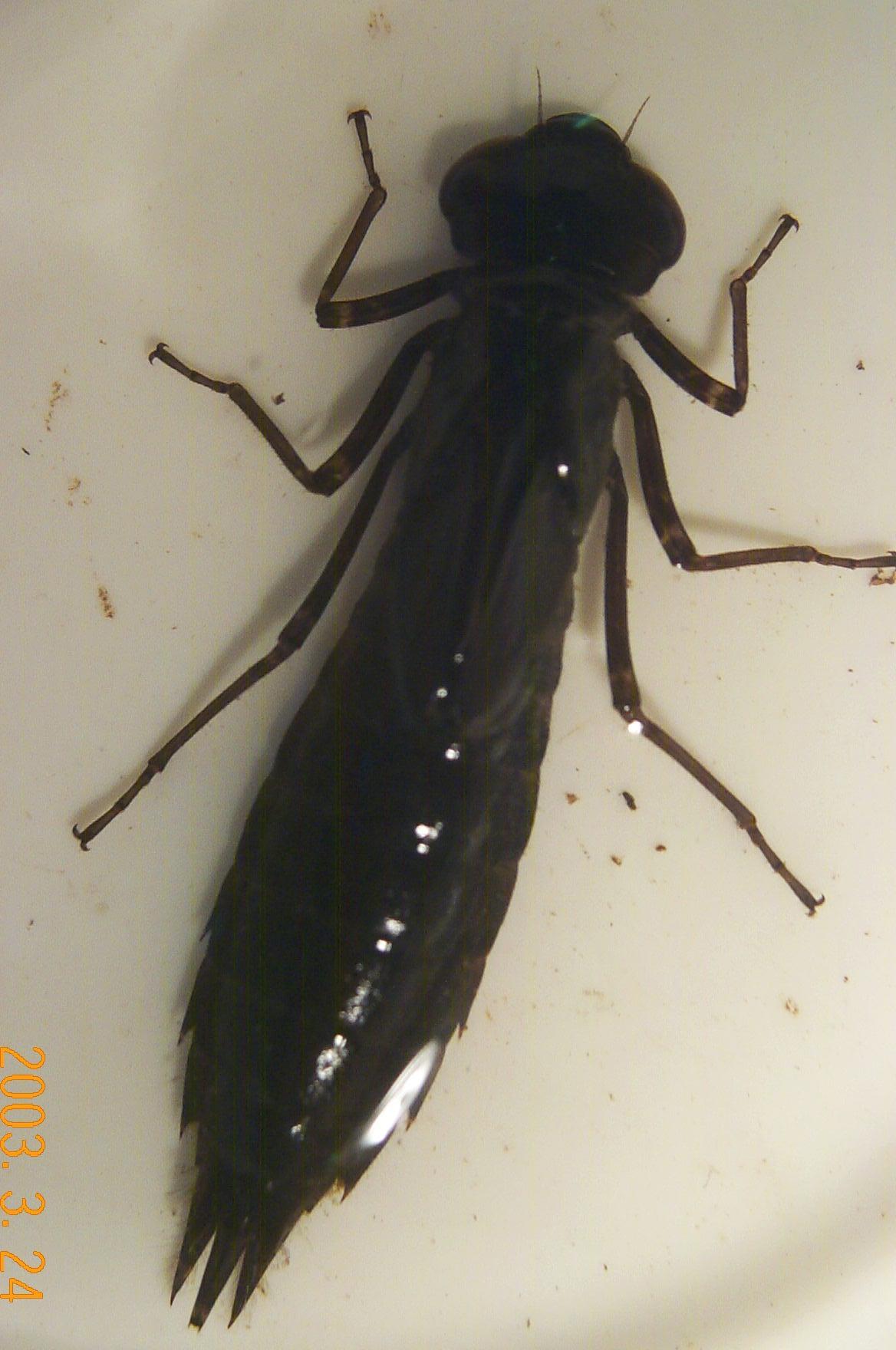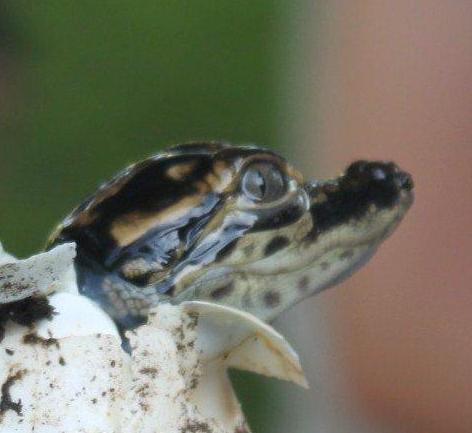|
Dragonflies and damselflies spend most of their lives, not as
flying insects, but as aquatic larvae, crawling about on the
bottom of ponds and lakes. Although most dragonflies live only a
few weeks as adults, the larval stage usually lasts about 1 year,
and in some species can take up to 5 years.
Dragonfly larvae are one of the most common specimens that are
found in the ponds at Brazos Bend State Park. Because of the long
larval stage, they can be found year-round, and in almost all
still bodies of water. Because of the great number of species of
dragonflies, the larvae vary considerably in size and shape. Some
are long and slender, others round and spider-like. All however
have a wide head, short antennae, and 3 short gills at the end of
their abdomens. The larva at the right is the larva of a darner,
family (Aeshnidae), and is over 2 inches long. But
dragonfly larva less than ¼ of an inch long are frequently
found as well.
|
|

Darner Dragonfly Larva (Aeshnidae), 55 mm long
|




